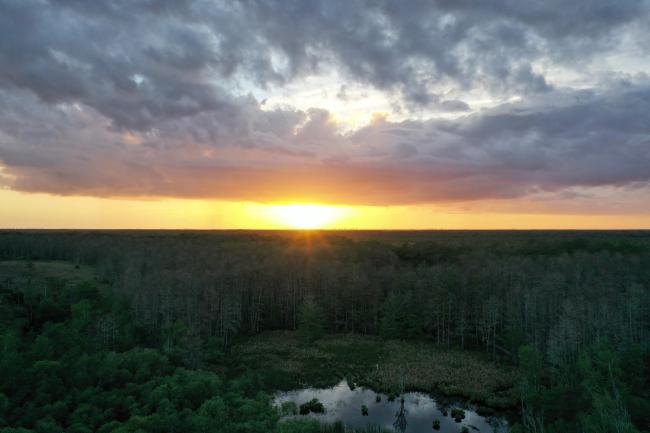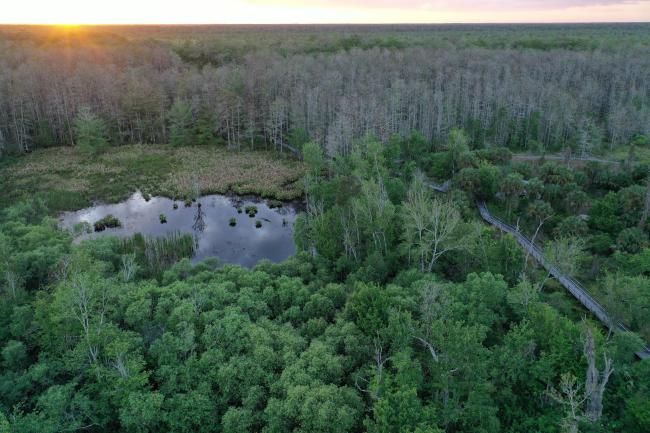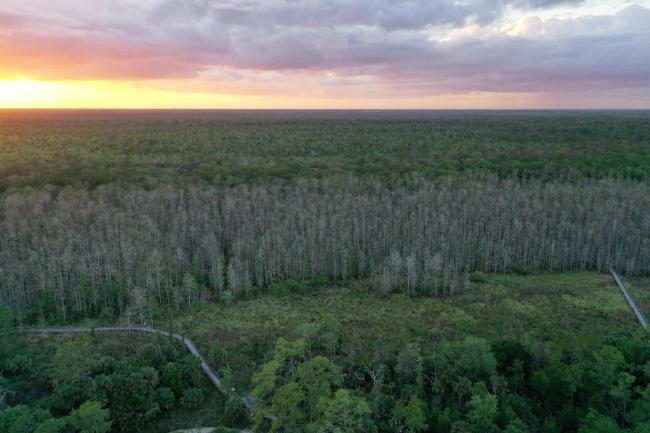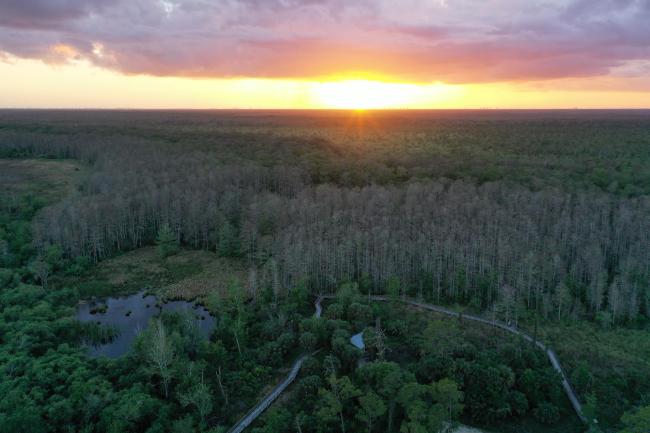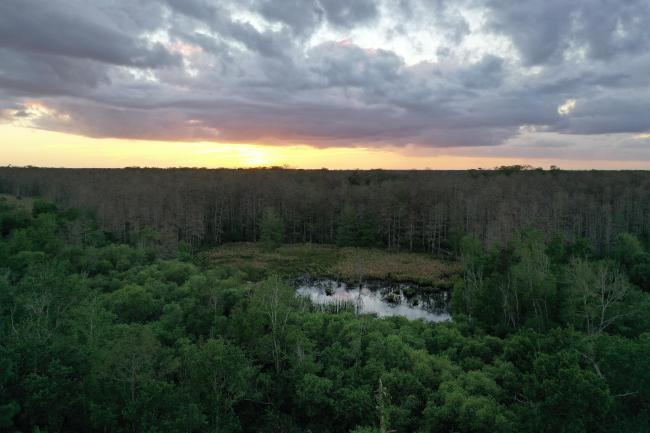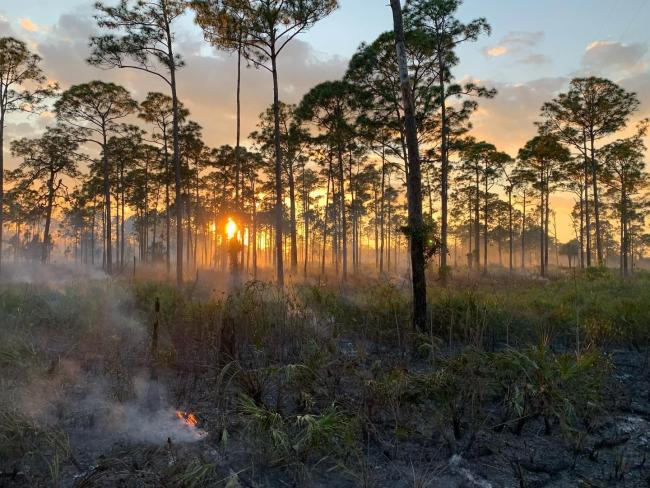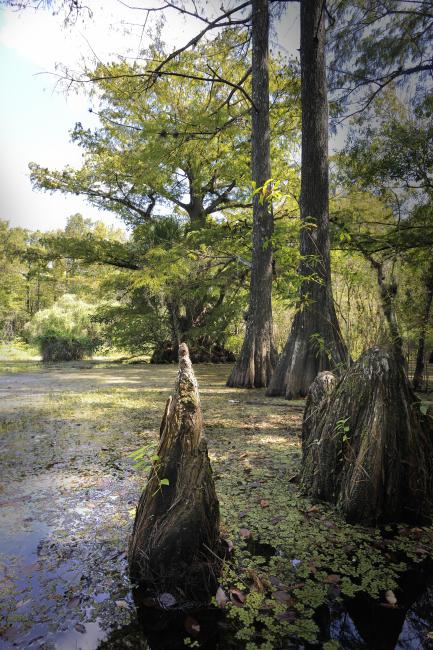Corkscrew Swamp Sanctuary
Corkscrew Swamp Sanctuary
- Country:
- United States of America
- Site number:
- 1888
- Area:
- 5,261.0 ha
- Designation date:
- 23-03-2009
- Coordinates:
- 26°23'49"N 81°36'56"W
Carousel
CarouselMaterials presented on this website, particularly maps and territorial information, are as-is and as-available based on available data and do not imply the expression of any opinion whatsoever on the part of the Secretariat of the Ramsar Convention concerning the legal status of any country, territory, city or area, or of its authorities, or concerning the delimitation of its frontiers or boundaries.
Corkscrew Swamp Sanctuary is located at the heart of the western Everglades in southwestern Florida. The Site contains habitats such as pine flatwoods, cypress swamps, marshes and wet prairies that were once common throughout southern Florida but since the mid-1900s have been largely lost. It supports rich biodiversity including the largest remaining old-growth bald cypress (Taxodium distichum) forest in the world. The estimated 500-year-old bald cypress trees reach heights of 40 metres and have provided the primary nesting site for federally threatened wood storks (Mycteria americana) since the early 1900s; they currently support 1.34 % of its total population in North America. The habitats also provide refuge for several endangered animal species such as the gopher tortoise (Gopherus polyphemus) and the American alligator (Alligator mississippiensis). In addition, more than 700 plant species are found including 29 known threatened or endangered plant species such as the ghost orchid (Dendrophylax lindenii), the satinleaf (Chrysophyllum oliviforme) and the stiff-flower star orchid (Epidendrum rigidum). Currently, the greatest threats to the Site are invasive species, dry-season over-draining, regional loss of wetlands, and climate change.
- Other global designation
- Natural National Landmarks Program
- US1888RIS_2110_en.pdf
- US1888RISformer_201104.pdf
